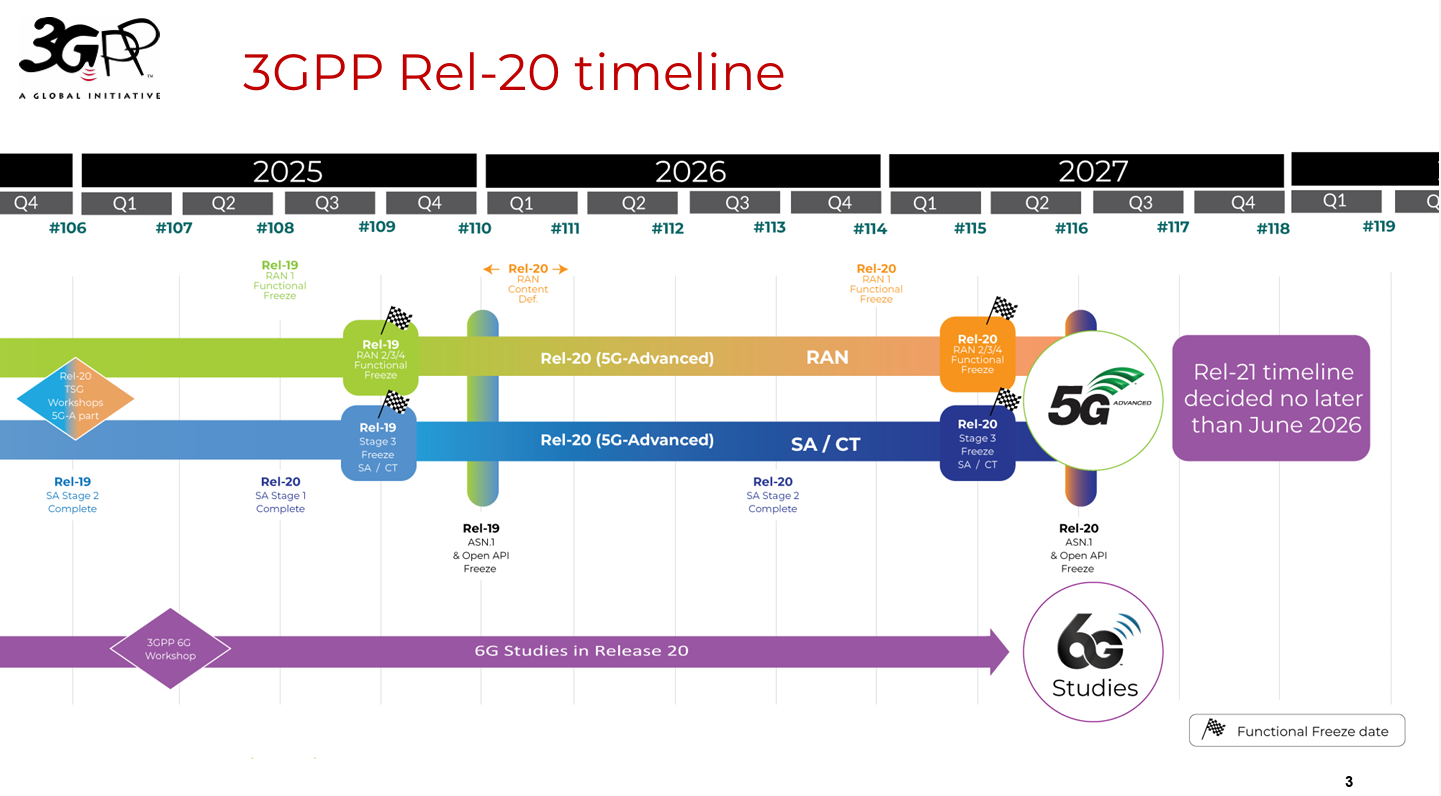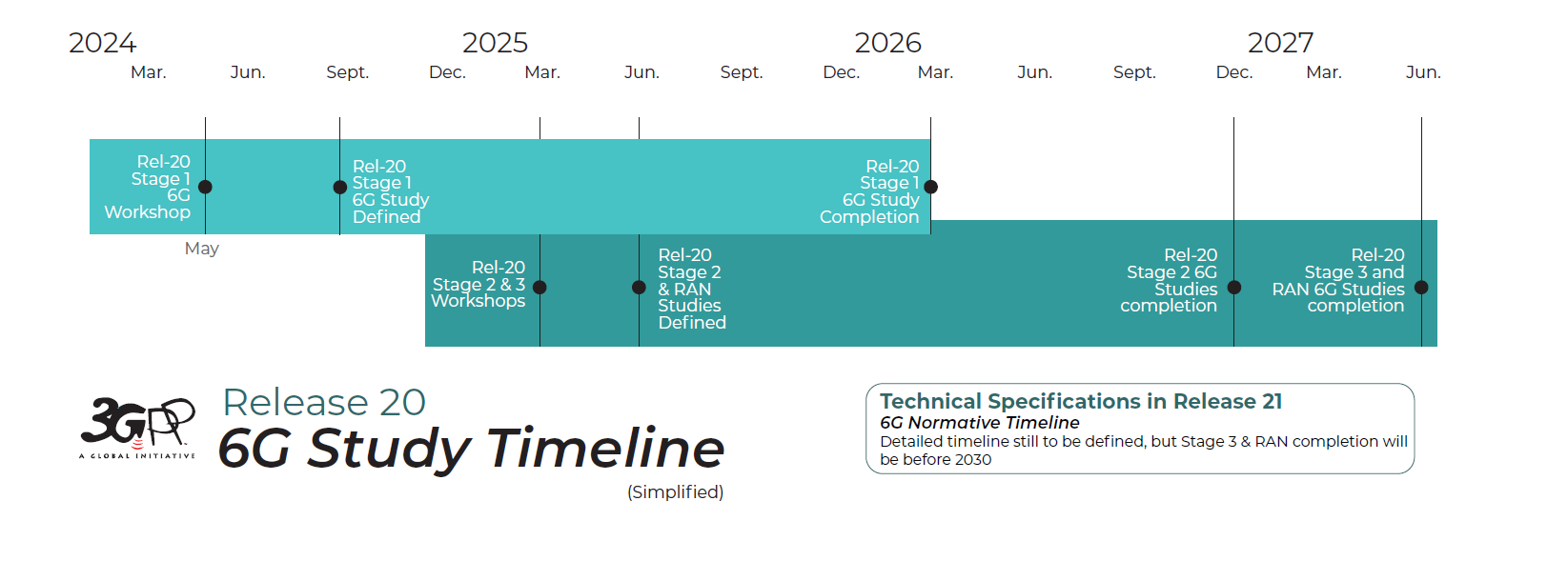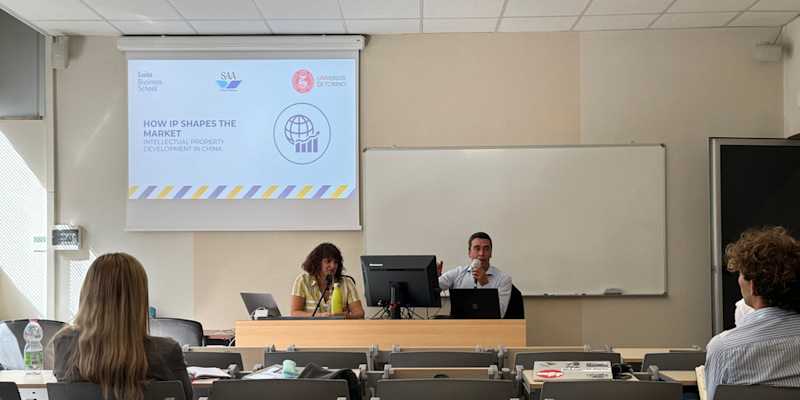The 10 issues shaping 6G standardisation
A recent workshop in South Korea kicked off preparations for the next generation of cellular tech. Sisvel experts followed the action and share their takeaways.
By Miqdad Hyder Junejo
Cellular experts convened in Incheon, South Korea last month for 3GPP plenary meetings. These included the first official workshop on 6G. The workshop signals the kick-off for a new generation of cellular standardisation at the 3GPP level. Ten years ago, in 2015, a similar event was held to initiate 5G discussions.
The workshop was a high-level discussion intended to highlight industry objectives and concerns for the next wave of cellular. It surfaced the issues that are top-of-mind for the companies that intend to define the use cases, requirements and technical specifications for 6G. It also provided some early hints as to what technologies will be developed under the 6G umbrella.
Sisvel’s 3GPP involvement
Cellular technology is a core focus for Sisvel Tech, whose engineers and patent attorneys provide unmatched expertise to Sisvel’s licensing programmes. The tech unit has recently stepped up its involvement within standardisation organisations, as explained in a recent Sisvel Insights interview.
Sisvel Tech began attending 3GPP meetings in 2023 to gain a deeper understanding of the standard development process. We have closely monitored how discussions are conducted, how companies contribute, and how consensus is ultimately reached after a process of debate and discussion. We have also focused on understanding the role played by decision-makers such as Chairs and Vice Chairs in guiding the progress of standardisation.
Sisvel Tech is now participating actively in all 3GPP meetings, primarily through in-person attendance. However, when physical participation is not possible, we monitor the proceedings remotely. In the ongoing work towards Release 19, Sisvel Tech has participated most closely in discussions on Sub-Band Full Duplex (SBFD) and Ambient-IoT within the RAN1 group.
SBFD is a key technology for improving network capacity and low-latency applications within 5G and 5G-Advanced. First introduced in 3GPP Release 18, it is set to evolve further in Release 19. SBFD enhances spectral efficiency by enabling simultaneous transmission and reception on different sub-bands. It also uses advanced cancellation techniques to reduce self-interference.
Ambient-IoT is a feature of Release 19 that will enable massive IoT connectivity with battery-free IoT devices that harvest energy. This will support cost-effective and low-power IoT deployment – a key building block for smart cities, logistics and environmental monitoring.
The 5G-to-6G roadmap
3GPP is currently focused on Release 19, the next update to the 5G standard. This work is scheduled to freeze after the second quarter of 2025. Attention will then turn to Release 20, which is expected to act as a bridge between 5G-Advanced and early 6G research. Official 6G standardization will be introduced in Release 21; the timing for this crucial stage has yet to be determined.
The timeline below shows where things stand.
As shown in the figure above, the recent 6G workshop kicks off a phase of 6G studies that will be carried out in parallel with the standardisation work around Release 20.
The latest edition of 3GPP News included this more detailed plan for 6G studies:
So, what issues will shape the 6G agenda? Here are some takeaways from last month’s workshop.
AI to play major role in 6G
Artificial intelligence (AI) and machine learning (ML) have the potential to transform how networks operate and deliver efficiency gains. Unlike in 5G, where AI serves as a supplementary tool, 6G will integrate AI more deeply into the network. Here are some of the ways that may happen:
Network automation and self-optimisation
AI could enable smarter networks to self-optimise, autonomously manage resources, and predict network demand in real-time - without human intervention. This would lead to more efficient and reliable networks.AI-native air interface
Networks could use AI to adapt to changing conditions, such as environmental factors and user demand, ensuring more flexible, responsive data transmission and improving overall performance.AI in massive MIMO and beamforming
AI might optimise technologies like MIMO, improving signal strength and minimising interference. This would enhance connectivity, especially in dense urban environments.Edge intelligence with federated AI
Instead of relying solely on central systems, AI will operate closer to the user (on the "edge"), reducing latency and improving real-time applications such as autonomous driving, healthcare, and virtual reality.
There was also some discussion of autonomous network slicing, which would involve AI driving more efficient resource allocation tailored to the specific needs of various industries.
But the workshop also discussed some of the risks that might come with a strong AI focus within 6G. Some companies raised concerns about the complexity of integrating AI, stressing the need for standardisation and strong security measures to mitigate AI-driven vulnerabilities in mobile networks.
5G-6G interoperability and service continuity
Another key topic discussed at the workshop was interoperability between 5G and 6G networks. Experts emphasised the importance of making sure users experience seamless service when switching between the two network generations. Some of the main points raised include:
Maintaining coverage and service continuity: Even though 6G will bring faster speeds and more capabilities, it’s crucial that it offers similar coverage to 5G, especially in areas where 6G is not yet available.
Fast fallback to 5G: In the event 6G is unavailable, there should be a smooth transition back to 5G without disruption. This requires improving device handovers between 5G and 6G networks.
Spectrum sharing: Since 5G and 6G will coexist for a while, effectively managing shared radio frequencies will be essential to ensuring smooth transitions and preventing network congestion.
Some companies also stressed the importance of backward compatibility, ensuring that current 5G investments remain valuable, while others raised concerns about achieving global consistency in how spectrum is allocated across different regions.
Other key 6G discussions
Several other important topics from the workshop are worth mentioning:
Integrated Sensing and Communication (ISAC): There was discussion about whether 6G could integrate communication and sensing technologies, allowing networks to "understand" their environment. This could lead to innovations like holographic communication and precision location services for smart cities.
Sustainability and energy efficiency: A significant focus was placed on reducing the environmental impact of 6G networks through eco-friendly solutions including energy-efficient network designs, the use of renewable energy and AI-enabled power management.
New spectrum exploration: Delegates also discussed the potential use of sub-terahertz frequencies for super-fast communication, although challenges like signal loss and high costs are still being addressed.
The last point in particular provoked differing opinions. Some companies expressed concerns about the feasibility of sub-THz communication, while others suggested combining lower and higher frequency bands to improve coverage and capacity. Additionally, some participants felt there was too much focus on the Core network in 6G discussions, and they stressed the importance of also prioritising the Radio network for balanced development.
Full speed ahead
The 6G workshop was an important opportunity for stakeholders to explore the potential roadmap for 6G, discuss technical topics and set an overall direction. It has provided guidance in all three areas, while also raising numerous questions as we head into the 6G studies phase.
What is all but certain is that 6G mobile communication will deliver faster speeds, greater reliability and smarter technology. We’ll continue to follow the standardisation process to get a better idea of how specifically these ends will be accomplished.
Miqdad Hyder Junejo is a patent engineer at Sisvel Tech




